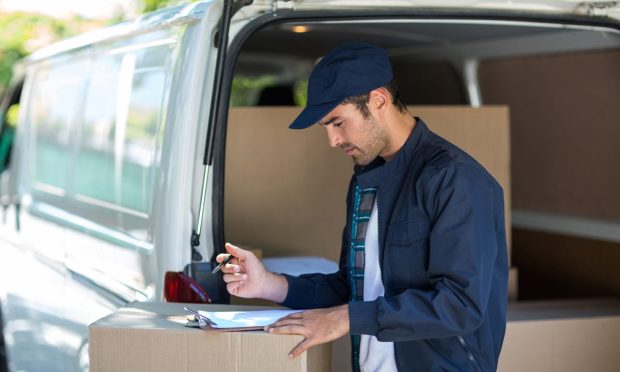Last Mile Delivery Providers Employ Technology to Manage Fuel Costs

Last mile delivery is complicated and expensive, especially when it involves direct-to-consumer deliveries. This means going to different places every day, often receiving incorrect information from consumers about their location and where to put the package, and finding and retaining delivery drivers at a time when the market is very competitive.
“It’s the complexity of the delivery itself and the reality that you’re orchestrating multiple parties at the same time in order to somehow get something in front of somebody else,” Andrew Travis, chief operating officer at Onfleet, told PYMNTS. “So, it’s hard.”
The recent surge in the price of gas has added to these challenges. Historically, gas accounts for 10% to 15% of the cost of last mile delivery, and that’s been inching higher.
“I don’t think gas prices are going to reduce last mile delivery demand, but I think they are going to start changing behavior,” Travis said.
Managing Fuel Costs
The rising price of gas affects different sorts of delivery providers in different ways. For companies that crowdsource the labor, it magnifies the difficulty of keeping drivers because it’s the drivers who buy the fuel. For companies that own and operate their own fleet, the price of gas impacts the margin per delivery and overall operating costs.
Companies doing last mile delivery employ several strategies to manage their fuel costs.
Those that own and operate their own fleets may install a gas station of their own at their facilities. That way, through volume and upfront buying, they can pay less for the gas than they would at a consumer pump.
Companies that crowdsource the labor may boost their delivery fee and add a surcharge that they pass through to the drivers. This helps them retain drivers who might otherwise go to a competitor.
“Fifty cents a trip is not going to make a real difference but it’s a psychological, ‘We care. We know gas prices are going up and so we’re going to do that,’” Travis said.
Adding New Vehicles and Technologies
Companies and gig economy drivers alike are also likely to continue shifting to more sustainable vehicles. That’s already been happening for several reasons, including a desire to improve the world, a need to save money and a feeling that all businesses must start choosing sustainable options.
“What we have seen in the last year or so, independent of the gas change, is that sustainability is now a buying criteria for retailers looking for delivery software and outsource providers,” Travis said.
Both types of organizations can bring the cost down by batching more and more deliveries together. Onfleet, a route planning, dispatch, communication and analytics platform for last mile delivery, has found that delivery companies can see 10% to 40% reductions of fuel consumption and cost when using a routing tool.
“Route optimization is probably the fastest way to reduce your costs and your fuel consumption,” Travis said. “‘Route optimization’ is just a fancy word for cost reducing — the purpose is to put as many deliveries on as few vehicles as possible driving the least number of miles.”
Orchestrating Last Mile Delivery
Many companies are still routing by using pencil and paper or Google Maps, but others have moved to route optimization platforms that employ today’s geospatial data and machine learning models.
“A proper optimization engine can consider more constraints more quickly and more accurately than any human can and really speed up that process as well. What takes a route optimization engine 30 minutes might take a team of people a year to actually pull off,” Travis said.
Last mile delivery orchestration now includes taking a route, feeding it into dispatch software, communicating with the customers as the statuses are reached, communicating with dispatch at all times and doing real-time optimization that reacts to changes in traffic and add on-demand stops.
“With the modern mobile device and its connection to our consumer, with eCommerce experience, now you can really knit all these parties together,” Travis said.
Making Delivery Sustainable
Looking ahead, Travis said he expects the pandemic-driven digital transformation and changes in consumer shopping preferences to continue to shape the delivery industry. Because consumers are working from home more often and want to spend more time with friends and family, delivery volume has stayed consistent.
“The question now is, how do we make this sustainable — in all definitions of the word — and that’s where folks have spent the most time the last year speaking with us about how they can drive further efficiency,” Travis said.